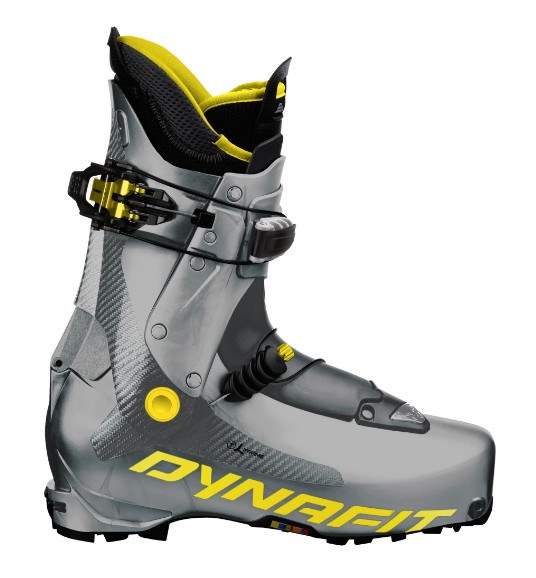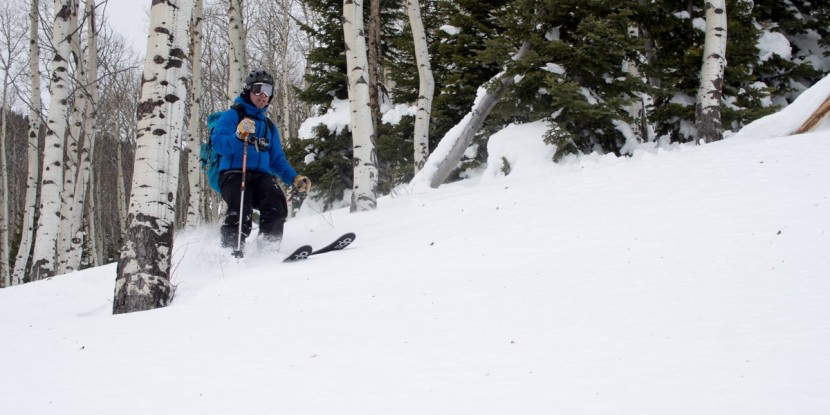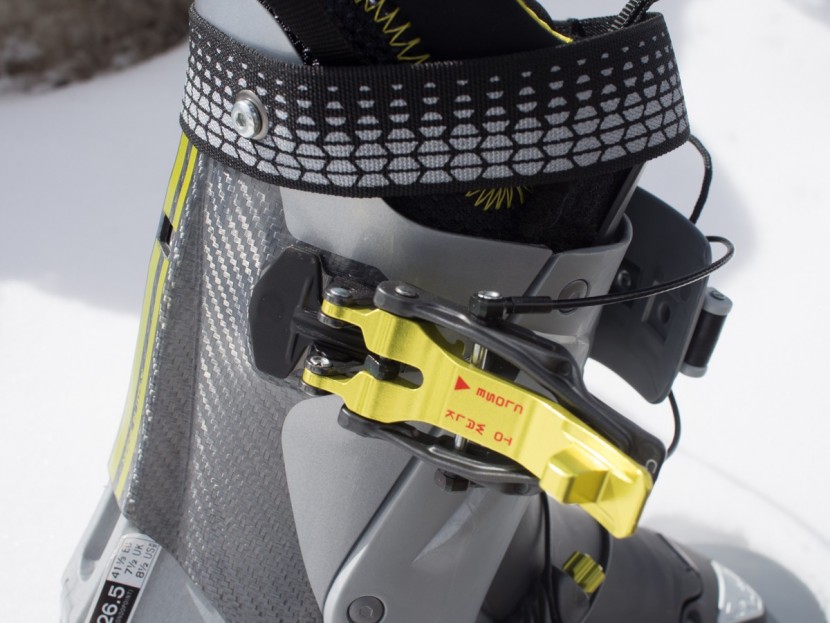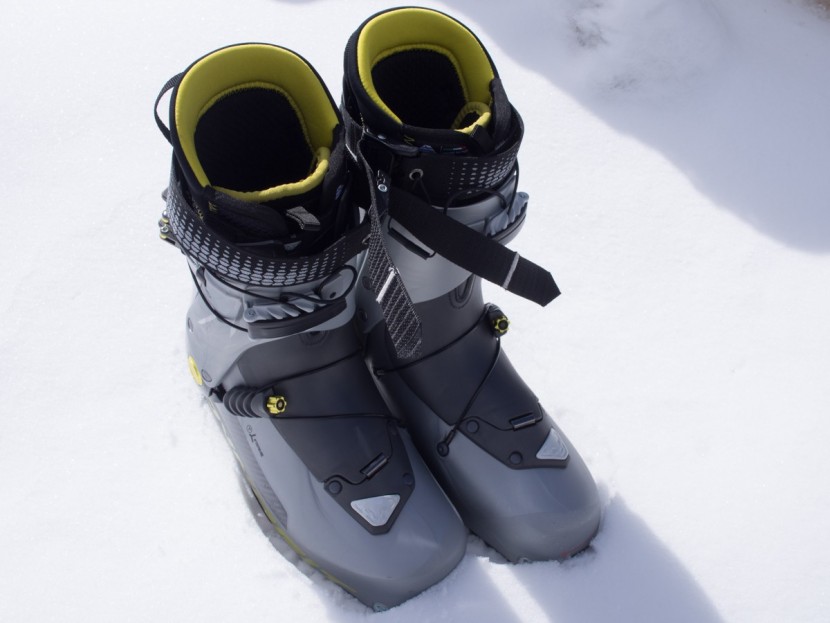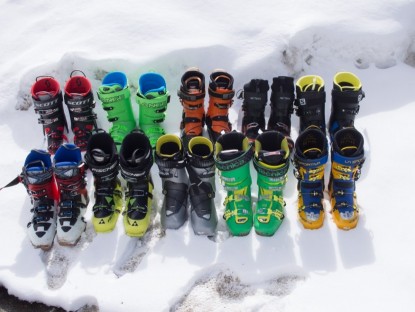We scoured the market, and then skied hundreds of days for this review. We did all this with a team that has decades of experience in the backcountry. For this discerning team, optimizing both uphill and downhill is paramount. We are good skiers who like to go high and wild in our backcountry pursuits. For those pursuits, we are particular about our gear. Of the boots on the market now, the TLT 7 Performance from Dynafit is the best boot for the adventures we prefer, and the technique we have.
Some boots ski better, but they don't tour as well as the TLT 7 Performance. There are a few boots that are lighter and tour better, but they suffer in other ways. In this middle-ground, compromised “sweet spot”, the TLT 7 shares space with just a few products. Notably, sitting here in the middle with the TLT 7 Performance is the Tecnica Zero G Tour Pro. This Tecnica strikes a similarly nuanced and optimized balance of performance attributes but tilts just a little toward the downhill performance end of things. If you are apprehensive about the uphill performance of your equipment, choose the TLT 7. If you are apprehensive about downhill performance, choose the Tecnica Zero G.Dynafit TLT7 Performance Review
Our Verdict
Our Analysis and Test Results
The Dynafit TLT ("Tour Lite Tech") boot line, as evidenced by the “seven” qualifier, has been through more iterations than other boot companies have ever produced models of AT boots. In short, Dynafit leads the charge with innovation in backcountry ski touring boots. With the TLT 7, they build on what has worked well for them while trying some rather innovative new attributes. We found the familiar attributes to be beneficial and receive the experimental upgrades with mixed opinions.
We highly recommend the TLT 7 for most ski touring users. If your usage patterns are or will be, largely human-powered backcountry skiing, with only occasional crampon use, there are few reservations we have. There are boots that ski better, there are boots that are warmer, and there are boots that are similar in weight. In striking delicate balances of performance, uphill and down, the TLT 7 nails the sweet spot, with an emphasis on the uphill.
Uphill Performance
Uphill performance is a function of boot cuff range, and resistance and friction within that range. In both ways, the TLT 7 is with the best players in the business. With a measured 55 degrees of cuff articulation, some people's ankles won't even bend as much as these boots allow. Interesting, in terms of uphill performance, is Dynafit's choice to employ their low-profile “speed nose”. Discerning skinners will notice a very slight improvement in skinning ergonomics with the more rearward pivot. However, there are ease of use limitations we note below.
Some other boots, with simpler construction and thinner liners, have even less friction within that range of motion and therefore score better in uphill performance than the TLT 7.
Weight
At a confirmed four pounds eight ounces for the pair, the TLT 7 Performance is just more than half the weight of our heaviest boot. When we list the tested boots from lightest to heaviest, we have to go past the middle mark of the list to find a boot that skis downhill better than the TLT 7.
When you multiply our scores for weight by our scores for downhill performance (or our scores for uphill performance by our scores for downhill performance, for that matter), nothing ranks better than the TLT 7. Other boots ski better, but are heavier while others are lighter, but ski worse. In optimizing for both downhill skiing and for weight and touring efficiency, regardless of the other attributes, the TLT 7 jumps ahead of the pack.
Downhill Performance
The TLT 7 skis downhill better than its weight, and touring ability would suggest. It certainly doesn't ski as well as some beefier boots, but for most ski tourers, in most terrain and conditions, it hits the sweet spot. The stiffness, when locked into ski mode, is impressive. The forward flex, as we've come to expect from lightweight, “tongue constructed” boots, is stiff and fairly non-progressive. If you have a modern, centered ski stance, letting the skis do the hard work of turning, this attribute is forgivable.
If you have a more traditional, forward flexing technique, the TLT 7 might require some adaptation. For those skiers looking for the ultimate downhill machine, we recommend other options. For human-powered adventurers with some patience for adapting ski technique, the TLT 7 is sweet.
Comfort and Fit
Each of the recent iterations of the Dynafit TLT line has gotten wider in fit than the previous. The TLT 5 fit only the lowest volume feet, the TLT 6 was more moderate in fit, and the TLT 7 now is on the wide side of average. For touring comfort and warmth, this is a good thing.
For those with high volume feet, this is a good thing. For those with narrow feet, looking for a performance fit, buyer beware.
Warmth
Warmth in boots comes from their fit, which will vary from one person to another, and from the thickness of their materials. The shell and liner of the TLT 7 are relatively thin. Compared to most of the boots we tested, the TLT 7 is not super warm. Compared to the other relatively lightweight boots, however, it is warmer.
Ease of Use
The construction and design, as it pertains to ease of use, of the TLT 7 Performance is different than any other boot on the market. First, and most visibly obvious, is the lack of a “toe ledge” on the TLT 7. To shave weight and shorten the sole for walking and scrambling, Dynafit eliminated any sort of ledge or incut on the toe of the boot. The result is a strangely smooth toe section with just the steel “tech fittings” interrupting the rounded shape.
This precludes the use of automatic crampons (a disadvantage) while making it better for skinning and walking. Non-automatic crampons will work on the TLT 7, but this type of spike is less secure than the automatic kind. One of our testers that would otherwise consider the TLT 7 boots great for ski mountaineering and expeditions is leery of the crampon compatibility and will likely steer clear. Generally, we find it to be an overall disadvantage.
Next, in terms of usability, the TLT 7 has basically one buckle. The buckle is sort of “compound” with an inner latch that tightens the lower shell by way of a cable system and an outer latch that secures the cuff circumferentially and locks the cuff to the lower shell. It seems complicated, on paper and in your first look, but the result is a slick, easy system that allows for almost the fastest transitions in our entire review. Even if you use the optional cam-locked “power strap”, only a few boots have fewer steps to go from uphill to downhill mode.
Value
For what you get, in terms of materials, design, and function, the price of the TLT 7 is reasonable. Certainly, there are less expensive products, but the additional performance is well worth the additional cost.
Conclusion
We had no trouble granting our Editors' Choice award to the TLT 7 Performance boot.
Other Versions and Accessories
Dynafit makes many different versions of the TLT 7. Notably, there are men's and women's versions, a warmer “expedition” version (still with the “speed toe”, requiring non-automatic crampons), and a stiffer, more expensive, all black “Carbonio” version. Finally, there is now a TLT 8 on the market. We have it in hand and are testing. We will get you a full comparison and review shortly.


